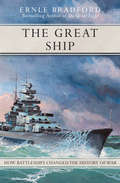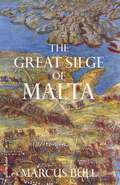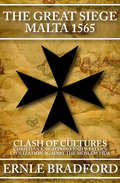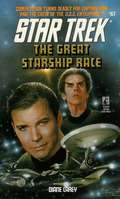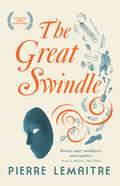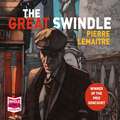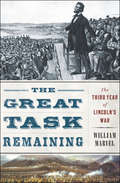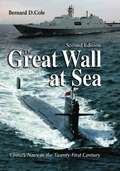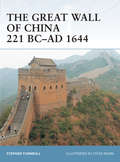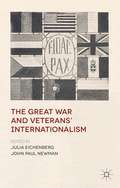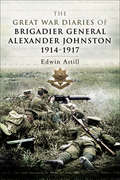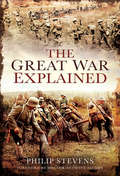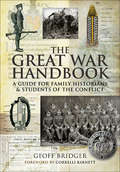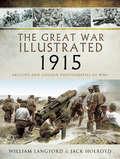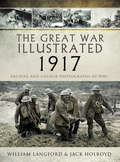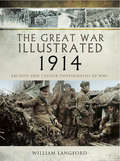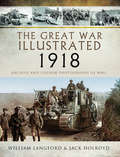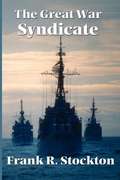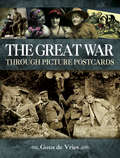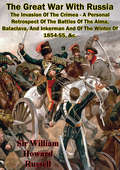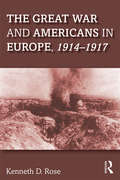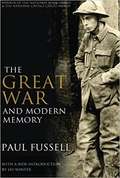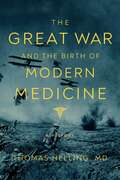- Table View
- List View
The Great Ship: How Battleships Changed the History of War
by Ernle BradfordThe evolution of the battleship through centuries of war, told by a nautical expert and author of The Mighty Hood. During its reign from the sixteenth century to the mid-twentieth, the battleship was the most powerful weapon of war known to man. Strategically, it determined a war&’s outcome. Tactically, it dominated every sea battle. But at the Battle of Taranto in 1940 and the attack on Pearl Harbor in 1941, carrier-borne aircraft made a decisive display of superiority over the once-mighty battleship. Thus World War II heralded the end of the era of The Great Ship. In The Great Ship, noted naval historian Ernle Bradford traces the evolution of battleships through centuries of conflict and innovation. Selecting one or two ships from each period, Bradford illustrates their use in action and the significant roles they played in the course of history.
The Great Siege of Malta
by Marcus Bull'Marcus Bull’s revisiting of the siege through the eyes of the Ottomans and a global lens that shifts our angle of vision has made a considerable contribution to our understanding of the events of 1565... his approach is investigatory, based on a forensic study of all the available evidence and posing open-ended questions... the coverage of the siege itself is succinct and full of interesting perspectives' - Roger Crowley, Engelsberg Ideas A major new account of the epic siege of the island fortress of Malta Even as the great siege began it was understood by both sides to be an epic – a potentially decisive encounter between an uneasy assortment of soldiers, native Maltese, adventurers and Knights Hospitaller on a strategically crucial but near waterless island and a vast, seemingly all-powerful Ottoman armada. With three quarters of the Mediterranean’s coasts already in the hands of the Sultan and his allies, all eyes were now on Malta.This superb new account of the siege emphasises the crucial importance of the siege while at the same time putting it in a far wider context. While since mistakenly recast as a climactic battle between the West and the East, it was also much more interesting and nuanced than that – both sides had many other interests and priorities beyond Malta. Süleyman the Magnificent had conquered and subsumed regions from Hungary to the Persian Gulf; Philip II was building an empire in America and Asia.Drawing on a wide range of eyewitness stories, Marcus Bull gives a vivid sense of the period’s technologies, values and assumptions. It was a grim world built on the labour of many thousands of disposable galley-slaves, shockingly brutal forms of warfare and religious absolutism. But it was also a world filled with the most extraordinary new discoveries and ideas. Both these worlds come together in the siege and in this book.
The Great Siege, Malta 1565: Clash of Cultures: Christian Knights Defend Western Civilization Against the Moslem Tide
by Ernle BradfordThe indispensable account of the Ottoman Empire&’s Siege of Malta from the author of Hannibal and Gibraltar. In the first half of the sixteenth century, the Ottoman Empire was thought to be invincible. Suleiman the Magnificent, the Ottoman sultan, had expanded his empire from western Asia to southeastern Europe and North Africa. To secure control of the Mediterranean between these territories and launch an offensive into western Europe, Suleiman needed the small but strategically crucial island of Malta. But Suleiman&’s attempt to take the island from the Holy Roman Empire&’s Knights of St. John would emerge as one of the most famous and brutal military defeats in history. Forty-two years earlier, Suleiman had been victorious against the Knights of St. John when he drove them out of their island fortress at Rhodes. Believing he would repeat this victory, the sultan sent an armada to Malta. When they captured Fort St. Elmo, the Ottoman forces ruthlessly took no prisoners. The Roman grand master La Vallette responded by having his Ottoman captives beheaded. Then the battle for Malta began in earnest: no quarter asked, none given. Ernle Bradford&’s compelling and thoroughly researched account of the Great Siege of Malta recalls not just an epic battle, but a clash of civilizations unlike anything since the time of Alexander the Great. It is &“a superior, readable treatment of an important but little-discussed epic from the Renaissance past . . . An astonishing tale&” (Kirkus Reviews).
The Great Starship Race (Star Trek: Vanguard #67)
by Diane CareyWhen a freindly, alien people called the Rey make contact with the Federation, they are thrilled to learn the galaxy has a large number of intelligent races. To bring the myriad cultures to their world, the Rey host a celebration -- inviting spacefaring peoples to send representative ships to compete against one another and The Great Starship Race is born. As the Federation's flagship, the U.S.S. Enterprise under the command of Captain James T. Kirk, is sent to compete. But the event takes a dark turn when a Romulan warship arrives and demands to join the race. Soon, Kirk and the Romulan commander are engaged in a deadly game of cat and mouse, and, for Kirk and his crew, the race becomes a struggle for survival. Faced with treachery at every turn. Kirk must protect his ship from relentless attack and prevent the annihilation of an entire world.
The Great Swindle: Prize-winning historical fiction by a master of suspense
by Pierre LemaitreNow a major French film Au revoir là-haut - Prix Goncourt-winning masterpiece by the writer who brought you Alex, Irène and Camille.October 1918: the war on the Western Front is all but over. Desperate for one last chance of promotion, the ambitious Lieutenant Henri d'Aulnay Pradelle sends two scouts over the top, and secretly shoots them in the back to incite his men to heroic action once more.And so is set in motion a series of devastating events that will inextricably bind together the fates and fortunes of Pradelle and the two soldiers who witness his crime: Albert Maillard and Édouard Péricourt.Back in civilian life, Albert and Édouard struggle to adjust to a society whose reverence for its dead cannot quite match its resentment for those who survived. But the two soldiers conspire to enact an audacious form of revenge against the country that abandoned them to penury and despair, with a scheme to swindle the whole of France on an epic scale.Meanwhile, believing her brother killed in action, Édouard's sister Madeleine has married Pradelle, who is running a little scam of his own...
The Great Swindle: Prize-winning historical fiction by a master of suspense
by Pierre LemaitreNow a major French film Au revoir là-haut - Prix Goncourt-winning masterpiece by the writer who brought you Alex, Irène and Camille.October 1918: the war on the Western Front is all but over. Desperate for one last chance of promotion, the ambitious Lieutenant Henri d'Aulnay Pradelle sends two scouts over the top, and secretly shoots them in the back to incite his men to heroic action once more.And so is set in motion a series of devastating events that will inextricably bind together the fates and fortunes of Pradelle and the two soldiers who witness his crime: Albert Maillard and Édouard Péricourt.Back in civilian life, Albert and Édouard struggle to adjust to a society whose reverence for its dead cannot quite match its resentment for those who survived. But the two soldiers conspire to enact an audacious form of revenge against the country that abandoned them to penury and despair, with a scheme to swindle the whole of France on an epic scale.Meanwhile, believing her brother killed in action, Édouard's sister Madeleine has married Pradelle, who is running a little scam of his own...
The Great Swindle: Prize-winning historical fiction by a master of suspense
by Pierre LemaitreOctober 1918: the war on the Western Front is all but over. Desperate for one last chance of promotion, the ambitious Lieutenant Henri d'Aulnay Pradelle sends two scouts over the top, and secretly shoots them in the back to incite his men to heroic action once more.And so is set in motion a series of devastating events that will inextricably bind together the fates and fortunes of Pradelle and the two soldiers who witness his crime: Albert Maillard and Édouard Péricourt.Back in civilian life, Albert and Édouard struggle to adjust to a society whose reverence for its dead cannot quite match its resentment for those who survived. But the two soldiers conspire to enact an audacious form of revenge against the country that abandoned them to penury and despair, with a scheme to swindle the whole of France on an epic scale.Meanwhile, believing her brother killed in action, Édouard's sister Madeleine has married Pradelle, who is running a little scam of his own...(P)2015 MacLehose Press
The Great Task Remaining: The Third Year of Lincoln's War
by William MarvelFocusing on the dramatic events of 1863, this is &“a well-researched and well-written study that will be a fine addition to Civil War collections&” (Booklist). The Great Task Remaining is a striking, often poignant portrait of people in conflict—not only in battles between North and South, but within and among themselves as the cost of the ongoing carnage sometimes seemed too much to bear. As 1863 unfolds, we see draft riots in New York, the disaster at Chancellorsville, the battle of Gettysburg, and the end of the siege of Vicksburg. Then, astonishingly, the Confederacy springs vigorously back to life after the Union summer triumphs, setting the stage for Lincoln&’s now famous speech on the Pennsylvania battlefield. Without abandoning the underlying sympathy for Lincoln, William Marvel makes a convincing argument for the Gettysburg Address as being less of a paean to liberty than an appeal to stay the course in the face of rampant antiwar sentiment. This book offers a provocative history of a dramatic year—a year that saw victory and defeat, doubt and riot—as well as a compelling story of a people who clung to the promise of a much-longed-for end. &“By 1863 Northern citizens and soldiers were increasingly and openly wondering whether preserving the union and ending slavery were worth the cost of Mr. Lincoln&’s war. Disillusion and war-weariness had set in: the war&’s only fruits seemed to be moral and political degradation, dangerous constitutional precedents, tens of thousands dead and maimed. The Battle of Chickamauga appeared to have restored the stalemate. Marvel particularly conveys the looming crisis of the impending expiration of the three-year enlistments that were the Union army&’s norm. That, combined with the increasing reluctance of Northern men to volunteer or send their sons, could have ended the war by default. Romance and adventure or misery and peril—which emotions would prevail? As Marvel conclusively demonstrates, the coin remained in the air as 1863 came to an end.&” —Publishers Weekly
The Great Wall at Sea, 2nd Edition
by Bernard D. ColeIn this new edition, Bernard Cole revises his acclaimed study of China s navy, one that continues to grow while the U.S. Navy shrinks. According to the author, Beijing is now giving increased attention to guarding its vital sea lanes because of the nation s growing dependence on maritime trade, especially energy supplies. He provides a thorough description of China s naval establishment, including its personnel system, followed by a detailed view of its ships, submarines, and aircraft, all marked by technical sophistication and capability as China reaches the top rank of the world s maritime powers. His evaluation is based on extensive interviews with Chinese and other naval experts, in-depth perusal of original documents, and visits to Chinese warships, training facilities, and shore establishments.
The Great Wall of China 221 BC-AD 1644
by Stephan TurnbullThe most famous example of fortification in the world, the Great Wall of China stretches for more than 6,000km across inhospitable terrain. Charting its development from its earliest origins in the 7th century BC through to the present day, this account reveals the true history of the wall, and explores the myths that surround it. Included are details of what it was like to live within the wall, how it was garrisoned and patrolled, and a discussion of how effective it was against attack. Through extensive examination of both ancient and modern sources, colour maps, artwork and photographs, this book illustrates why the wall is one of the great wonders of the world.
The Great War And Veterans’ Internationalism
by John Paul Newman Julia EichenbergAfter the Great War, Veterans were a new transnational mass phenomenon. This volume uses case studies to discuss the extent and impact of international veterans' organisations and draws out important comparative points between well-researched and documented movements and those that are less well-known.
The Great War Diaries of Brigadier General Alexander Johnston, 1914–1917
by Edwin Astill"Alexander Johnston went over to France in August 1914 as the signals officer for 7 Infantry Brigade. He went on to serve in that capacity with 3rd Division before becoming, in turn, Brigade Major, Commanding Officer 10th Battalion Cheshire Regiment and finally Officer Commanding 126 Infantry Brigade. Throughout he proved himself to be a brave, resourceful and determined soldier. He was always close to the front line, yet his signals and staff duties gave him insights into the conduct of the war at higher levels. Therein lies the value of this diary. Many of the major engagements of the war are covered. He took part in Mons, Le Cateau and the subsequent retreat and advance to the Aisne. The diary provides valuable insights into the battle of La Bassee and the trench warfare of 1915. As a Brigade Major he was kept busy in 1916 with both holding the line (in the face of intensive enemy mining operations) and the Somme battle. By 1917 his work in command of 10th Cheshire Regiment showed positive results in the battalions performance at Messines and gained him promotion to Brigadier General. Within days of taking command he was up at the front line where he was badly wounded. But for the wound Johnston may well have gained even higher command and wider acclaim for his services. The diary is an important addition to the literature of the Great War. "
The Great War Explained: The Essential Starting Point For All Who Want To Understand The First World War
by Philip StevensThis is much more than just another book to add to the thousands on The Great War. It sets out to fill a gap. Written for the layman by a layman (who is also an articulate and experienced battlefield guide) it summarizes the key events and contributions of key individuals, some well, others unknown but with a story to tell.To get a true picture of this monumental event in history, it is necessary to grasp the fundamentals, be they military, political, social or simply human. The slaughters at Verdun, Somme and Passchendaele are no more than statistics without the stories of those that fought, drowned and died there.It is designed to capture the imagination and feed the mind of that ever increasing number of people who seek a better understanding of The Great War.
The Great War Handbook: A Guide for Family Historians & Students of the Conflict
by Geoff BridgerGeoff Bridgers The Great War Handbook answers many of the basic questions newcomers ask when confronted by this enormous and challenging subject not only what happened and why, but what was the Great War like for ordinary soldiers who were caught up in it. He describes the conditions the soldiers endured, the deadly risks they ran, their daily routines and the small roles they played in the complex military machine they were part of. His comprehensive survey of every aspect of the soldiers life, from recruitment and training, through the experience of battle and its appalling aftermath, is an essential guide for students, family historians, teachers and anyone who is eager to gain an all-round understanding of the nature of the conflict. His authoritative handbook gives a fascinating insight into the world of the Great War - it is a basic book that no student of the subject can afford to be without.
The Great War Illustrated - 1915: Archive and Colour Photographs of WWI (The Great War Illustrated)
by Jack Holroyd William LangfordThe second in a series of five titles, which will cover each year of the war graphically. Countless thousands of pictures were taken by photographers on all sides during the First World War. These pictures appeared in the magazines, journals and newspapers of the time. Some illustrations went on to become part of post-war archives and have appeared, and continue to appear, in present-day publications and TV documentary programmes many did not. The Great War Illustrated series will include in its pages many rarely seen images with individual numbers allocated and subsequently they will be lodged with the Taylor Library Archive for use by editors and authors.The Great War Illustrated 1915 covers the 1915 Gallipoli campaign and the battles that commenced on the Western Front that year. Some images will be familiar many will be seen for the first time by a new generation interested in the war that changed the world forever. With over 1,000 painstakingly restored images, this will be a definitive picture reference book on 1915 and will appeal to enthusiasts, collectors and student of the period alike.
The Great War Illustrated - 1917: Archive and Colour Photographs of WWI (The Great War Illustrated)
by Jack Holroyd William LangfordFourth in a series of five titles which will cover each year of the war graphically. Countless thousands of pictures were taken by photographers on all sides during the First World War. These pictures appeared in the magazines, journals and newspapers of the time. Some illustrations went on to become part of post-war archives and have appeared, and continue to appear, in present-day publications and TV documentary programmes many did not. The Great War Illustrated series, beginning with the year 1914, will include in its pages many rarely seen images with individual numbers allocated, and subsequently they will be lodged with the Taylor Library Archive for use by editors and authors.The Great War Illustrated 1917 covers the battles at Arras, Passchendaele and Cambrai, the use of aviation and the role of the tanks. Some images will be familiar, and many will be seen for the first time by a new generation interested in the months that changed the world for ever.
The Great War Illustrated 1914: Archive and Colour Photographs of WWI
by William LangfordFirst of a series of five titles which will cover each year of the war graphically. Countless thousands of pictures were taken by photographers on all sides during the First World War. These pictures appeared in the magazines, journals and newspapers of the time. Some illustrations went on to become part of post war archives and have appeared, and continue to appear, in present-day publications and TV documentary programmes many did not. The Great War Illustrated series, beginning with the year 1914, will include in its pages many rarely seen images with individual numbers allocated and subsequently they will be lodged with the Taylor Library Archive for use by editors and authors.Gt War Illustrated 1914 covers the outbreak of hostilities, the early battles, the war at sea, forming of the great trench line stretching from the coast to the Swiss border and ends with the Xmas truce. Some images will be familiar many will be seen for the first time by a new generation interested in the months that changed the world for ever.
The Great War Illustrated 1918: Archive and Colour Photographs of WWI (The Great War Illustrated)
by Jack Holroyd William LangfordA pictorial history of events that occurred during World War I in 1918.The final book in a series of five titles which graphically cover each year of the war. Countless thousands of pictures were taken by photographers on all sides during the First World War. These pictures appeared in the magazines, journals, and newspapers of the time. Some illustrations went on to become part of postwar archives and have appeared, and continue to appear, in present-day publications and TV documentary programs—many did not. The Great War Illustrated series, beginning with the year 1914, includes in its pages many rarely seen images with individual numbers allocated, and subsequently they will be lodged with the Taylor Library Archive for use by editors and authors.While some of the images in The Great War Illustrated 1918 will be familiar, many will be seen for the first time by a new generation interested in the months that changed the world for ever.Praise for The Great War Illustrated 1918“Add this book to the others in the series and you have the most comprehensive photographic record of WWI.” —The Armourer, Editor's Choice“This has been a fantastic series of books and this last volume has maintained the standard from first to last.” —War History Online
The Great War Syndicate
by Frank R. StocktonIn the spring of a certain year, not far from the close of the nineteenth century, when the political relations between the United States and Great Britain became so strained that careful observers on both sides of the Atlantic were forced to the belief that a serious break in these relations might be looked for at any time, the fishing schooner Eliza Drum sailed from a port in Maine for the banks of Newfoundland.
The Great War Through Picture Postcards
by Guus de VriesDuring World War I, the picture postcard was the most important means of communication for the soldiers in the field and their loved ones at home, with an estimated 30 billion of them sent between 1914 and 1918. A Postcard from home offered the soldier in the trenches a short escape from their daily hell, while receiving a postcard from the man on the front-line was literally a sign of life. These postcards create a vivid record of life at home and abroad during the Great War, both from the messages they carries and the pictures on the cards themselves. The dipiction of war on the contemporary postcards is extremely diverse: The ways in which the postcards depict the war differs greatly; from simple enthusiasm, patriotism and propaganda to humour, satire and bitter hatred. Other portray the wishes and dreams (nostalgia, homesickness and pin-ups) of the soldiers, the technological developments of the armies, not to mention the daily life and death on the battlefield, including the horrific reality of piles of bodied and mass-graves Altogether, this extraordinarily vivid contemporary record of the Great War offers a unique and details insight on the minds and mentality of the soldiers and their families who lived and died in the war to end all wars.
The Great War With Russia — The Invasion Of The Crimea - A Personal Retrospect: Of The Battles Of The Alma, Balaclava, And Inkerman And Of The Winter Of 1854-55, &c. [Illustrated Edition]
by Sir William Howard Russell[Illustrated with over two hundred and sixty maps, photos and portraits, of the battles, individuals and places involved in the Crimean War]"The journalist William Howard Russell (1820-1907) is sometimes regarded as being the first war correspondent, and his reports from the conflict in the Crimea are also credited with being a cause of reforms in the British military system. This account of his time there, first published in 1858 and expanded in this 1895 edition, explains how Russell was sent by The Times of London in 1854 to join British troops stationed in Malta. He spent the next two years witnessing some of the key moments of the war, including the battle of Balaclava and the ill-fated Charge of the Light Brigade. His newspaper reports of the fighting and of the living conditions for the troops were widely read and very influential. In this retrospective work, Russell gives a more personal narrative of his experiences, making this an important account of one the most brutal wars of the nineteenth century."-Cambridge Ed.
The Great War and Americans in Europe, 1914-1917
by Kenneth D. RoseThis book examines the experiences of Americans in Europe during the First World War prior to the U.S. declaration of war. Key groups include volunteer soldiers, doctors, nurses, ambulance drivers, reporters, diplomats, peace activists, charitable workers, and long-term American expatriate civilians. What these Americans wrote about the Great War, as published in contemporary books and periodicals, provides the core source material for this volume. Author Kenneth D. Rose argues that these writings served the critical function of preparing the American public for the declaration of war, one of the most important decisions of the twentieth century, and defined the threat and consequences of the European conflict for Americans and American interests at home and abroad.
The Great War and Modern Memory
by Paul FussellFussell writes: This book is about the British experience on the Western Front from 1914 to 1918 and some of the literary means by which it has been remembered, conventionalized, and mythologized. It is also about the literary dimensions of the trench experience itself. Indeed, if the book had a subtitle, it would be something like "An Inquiry into the Curious Literariness of Real Life." <P><P> Winner of the National Book Award
The Great War and the Birth of Modern Medicine: A History
by Thomas HellingA startling narrative revealing the impressive medical and surgical advances that quickly developed as solutions to the horrors unleashed by World War I.The Great War of 1914-1918 burst on the European scene with a brutality to mankind not yet witnessed by the civilized world. Modern warfare was no longer the stuff of chivalry and honor; it was a mutilative, deadly, and humbling exercise to wipe out the very presence of humanity. Suddenly, thousands upon thousands of maimed, beaten, and bleeding men surged into aid stations and hospitals with injuries unimaginable in their scope and destruction. Doctors scrambled to find some way to salvage not only life but limb. The Great War and the Birth of Modern Medicine provides a startling and graphic account of the efforts of teams of doctors and researchers to quickly develop medical and surgical solutions. Those problems of gas gangrene, hemorrhagic shock, gas poisoning, brain trauma, facial disfigurement, broken bones, and broken spirits flooded hospital beds, stressing caregivers and prompting medical innovations that would last far beyond the Armistice of 1918 and would eventually provide the backbone of modern medical therapy. Thomas Helling&’s description of events that shaped refinements of medical care is a riveting account of the ingenuity and resourcefulness of men and women to deter the total destruction of the human body and human mind. His tales of surgical daring, industrial collaboration, scientific discovery, and utter compassion provide an understanding of the horror that laid a foundation for the medical wonders of today. The marvels of resuscitation, blood transfusion, brain surgery, X-rays, and bone setting all had their beginnings on the battlefields of France. The influenza contagion in 1918 was an ominous forerunner of the frightening pandemic of 2020-2021. For anyone curious about the true terrors of war and the miracles of modern medicine, this is a must read.
The Great War and the Origins of Humanitarianism, 1918-1924
by Bruno CabanesThe aftermath of the Great War brought the most troubled peacetime the world had ever seen. Survivors of the war were not only the soldiers who fought, the wounded in mind and body. They were also the stateless, the children who suffered war s consequences, and later the victims of the great Russian famine of 1921 to 1923. Before the phrases universal human rights and non-governmental organization even existed, five remarkable men and women - Rene Cassin and Albert Thomas from France, Fridtjof Nansen from Norway, Herbert Hoover from the US and Eglantyne Jebb from Britain - understood that a new type of transnational organization was needed to face problems that respected no national boundaries or rivalries. Bruno Cabanes, a pioneer in the study of the aftermath of war, shows, through his vivid and revelatory history of individuals, organizations, and nations in crisis, how and when the right to human dignity first became inalienable.
